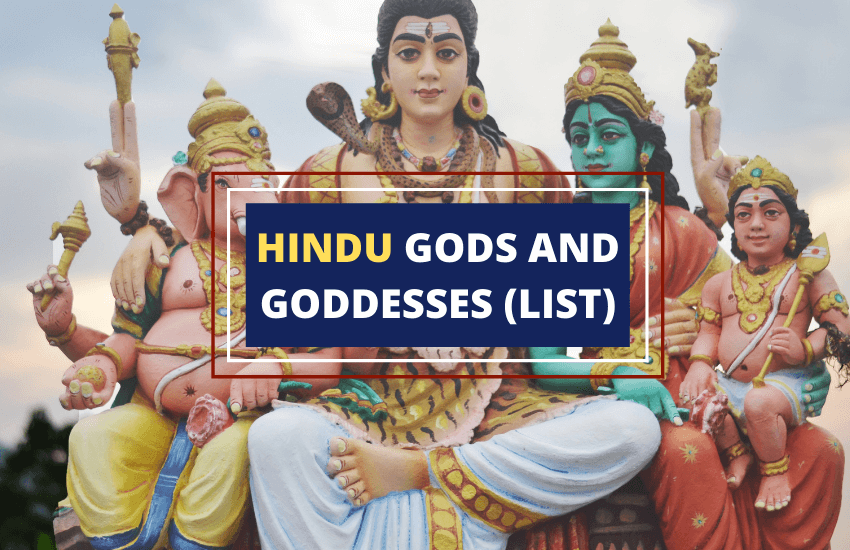
Table of Contents
While Hindus believe in a Supreme Being (Brahman), there are numerous gods and goddesses who represent different aspects of Brahman. As such, the religion is both pantheistic and polytheistic. In this article, we present you with a list of the most significant gods of Hinduism.
Brahma
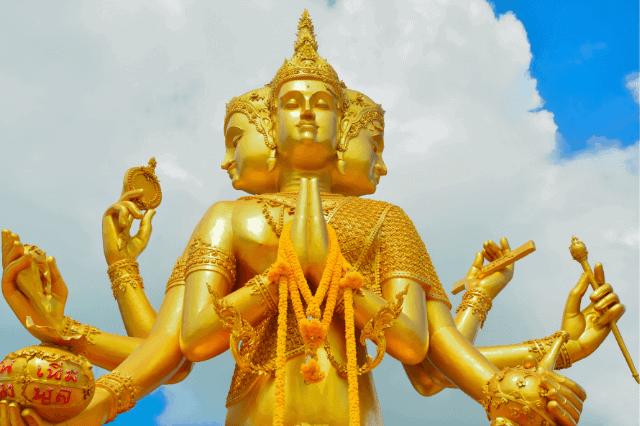
According to Hinduism, Brahma emerged from a golden egg to be the creator of the world and everything in it. His worship was fundamental from 500 BC until AD 500 when other deities like Vishnu and Shiva took his place.
At some point in Hinduism, Brahma was part of the Trimurti, the trinity of gods formed by Brahma, Vishnu, and Shiva. Brahma was the husband of Saraswati, one of the most famous goddesses of this religion. In most of his depictions, Brahma appeared with four faces, symbolizing his large capacity and dominion. In modern times, Brahma’s worship decreased, and he became a less significant god. Today, Brahma is the least worshipped god in Hinduism.
Vishnu
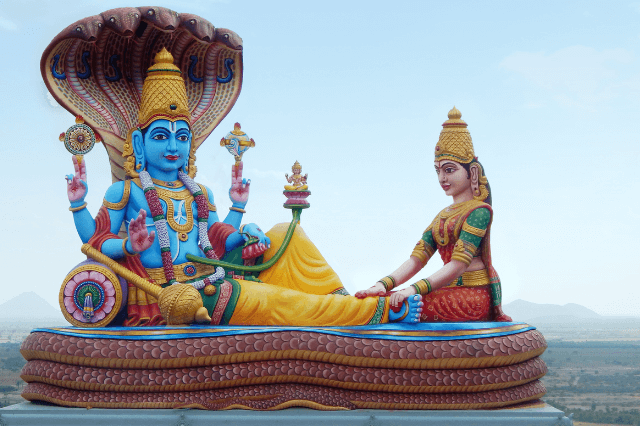
Vishnu is the god of preservation and the protector of good and one of the main gods of Hinduism. Vishnu is the supreme god of Vaishnavism, one of the major traditions of Hinduism. He is part of the Trimurti and is Lakshmi’s consort. Among his many avatars, the most influential were Rama and Krishna.
Vishnu first appeared around 1400 BCE in Rigvedic hymns. In literature, he appears as a savior for humankind on more than one occasion. Most of his depictions show him with two or four arms and is depicted sitting next to Lakshmi. His symbols are the lotus, the discus, and the conch. As the supreme god of Vaishnavism, he is a highly worshipped god in modern Hinduism.
Shiva
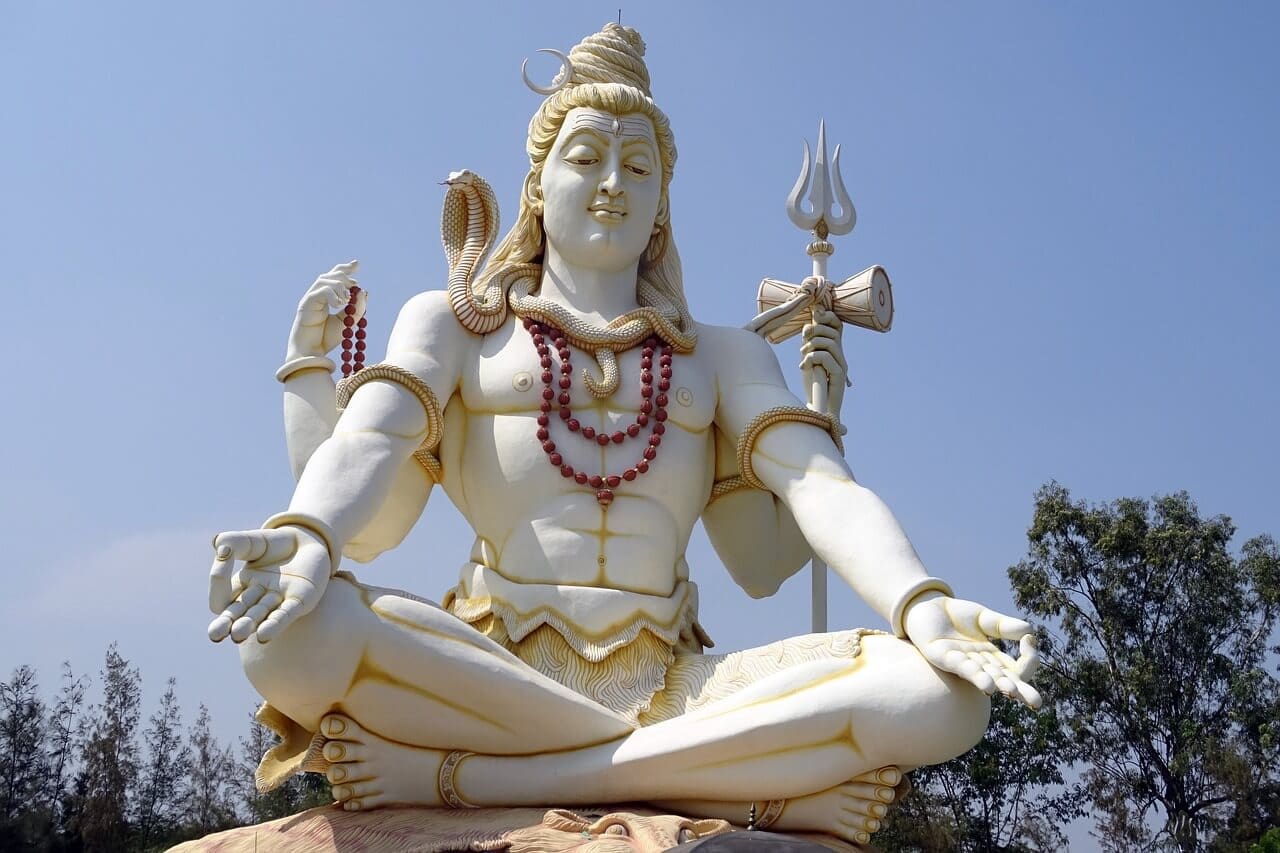
Shiva is the god of destruction, the destroyer of evil, and the lord of meditation, time, and yoga. He is the supreme god of Shaivism, one of the major traditions of Hinduism. Furthermore, he is part of the Trimurti, and he is Parvati’s consort. From her, Shiva fathered Ganesha and Kartikeya.
Just like the other gods of the Trimurti, Shiva has a myriad of avatars who deliver different functions on earth. His female counterpart varied and could also be Kali or Durga, depending on the myth. According to some legends, he brought the Ganges river to the world from the sky. In this sense, some of his depictions show him in or with the Ganges.
Shiva commonly appears with three eyes, a trident, and a garland of skulls. He is typically depicted with a snake around his neck as well. As the supreme god of Shaivism, he is a highly worshipped god in modern Hinduism.
Saraswati
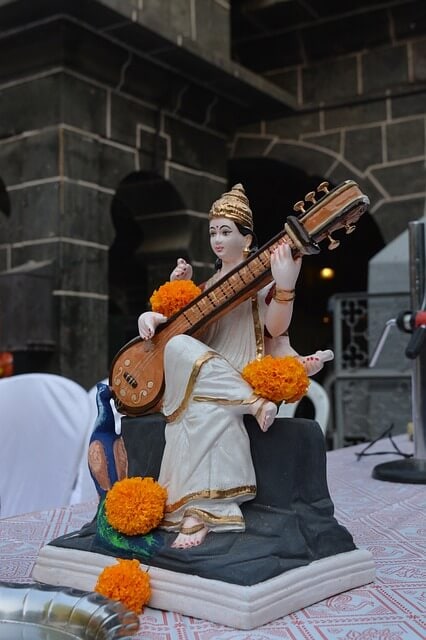
In Hinduism, Saraswati is the goddess of knowledge, art, and music. In this sense, she had to do with many affairs of daily life in India. According to some accounts, Saraswati presides over the free flow of consciousness and wisdom.
In Hinduism, she is the daughter of Shiva and Durga and is the wife of Brahma, the creator god. It is believed that Saraswati created Sanskrit, making her an influential goddess for this culture. In most of her depictions, the goddess appears flying on a white goose and holding a book. She has an enormous impact on Hinduism since she gave humankind the gift of speech and intelligence.
Parvati
Parvati is the Hindu mother goddess who presides over energy, creativity, marriage, and motherhood. She is the wife of Shiva, and together with Lakshmi and Saraswati, she forms the Tridevi. The Tridevi is the female counterpart of the Trimurti, formed by the wives of these gods.
Apart from that, Parvati also has connections with childbirth, love, beauty, fertility, devotion, and divine strength. Parvati has over 1000 names since each one of her attributes received one. Since she is the wife of Shiva, she became an important part of Shaivaism. Most depictions show Parvati as a mature and beautiful woman accompanying her husband.
Lakshmi
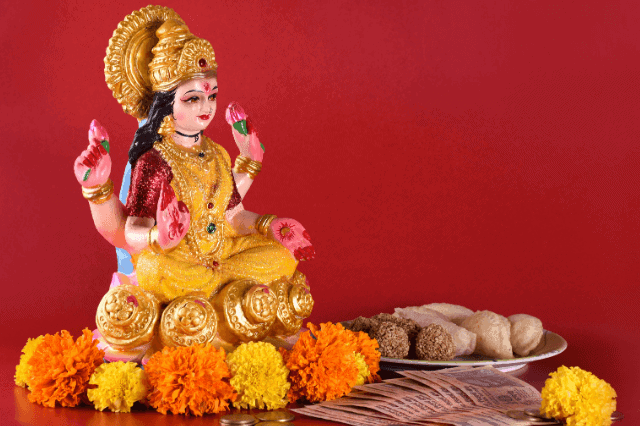
Lakshmi is the Hindu goddess of wealth, good fortune, and material accomplishments. She is Vishnu’s consort, and therefore, a central goddess in Vaishnavism. Apart from that, Lakshmi also has associations with prosperity and spiritual fulfillment. In most of her depictions, she appears with four arms holding lotus flowers. White elephants are also part of her most common artworks.
Lakshmi is present in most Hindu homes and businesses for her to offer her providence and favor. People worship Lakshmi to have both material and spiritual abundance. Lakshmi is one of the essential goddesses of Hinduism, and she is part of the Tridevi.
Durga
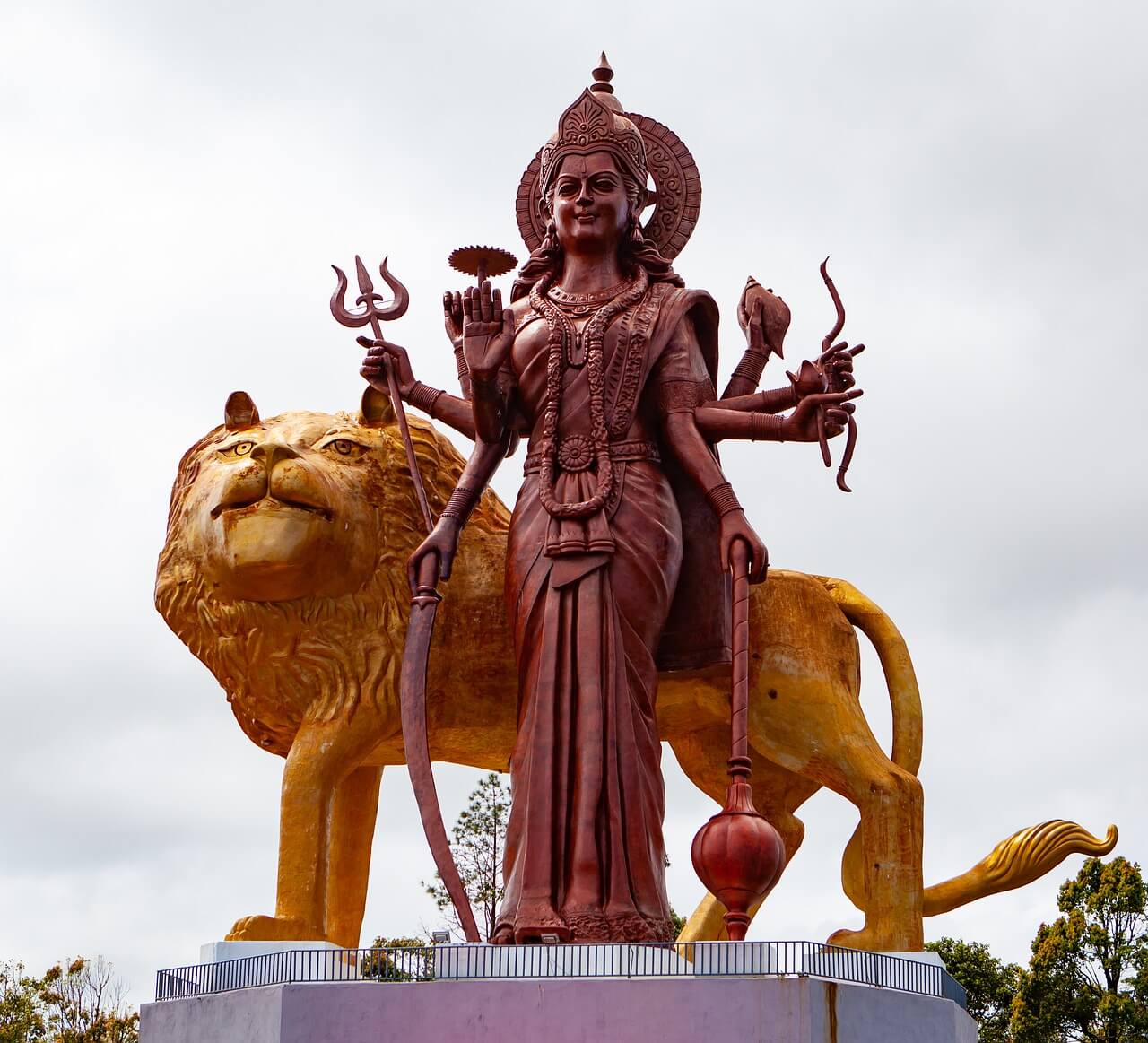
Durga is the goddess of protection and a central figure in the eternal struggle between good and evil. She first came to the world to fight a buffalo demon who was terrorizing the land, and she stayed as one of the most powerful goddesses of Hinduism.
In most depictions, Durga appears riding a lion into battle and holding weapons. In these artworks, Durga has between eight and eighteen arms, and each hand carries a different weapon to the battlefield. Durga is the protectress of good and the destroyer of evil. She is also worshipped as a mother goddess. Her principal festival is the Durga-puja, which takes place yearly in September or October. In some accounts, she is the consort of Shiva.
Ganesha
Ganesha was the son of Shiva and Parvati, and he was the god of success, wisdom, and new beginnings. Ganesha was also the remover of obstacles and the lord of knowledge. All branches of Hinduism worship Ganesha, and this makes him among the most influential deity of this religion.
In most of his depictions, he appears as a pot-bellied elephant. The image of Ganesha with his elephant head is one of the most spread images of India. In some of his depictions, Ganesha appears riding a mouse, which helps him remove the barriers to success. Ganesha is also the Lord of the People, as his name proposes. Since he is the god of beginnings, he is a central part of the rites and adorations in modern Hinduism.
Krishna
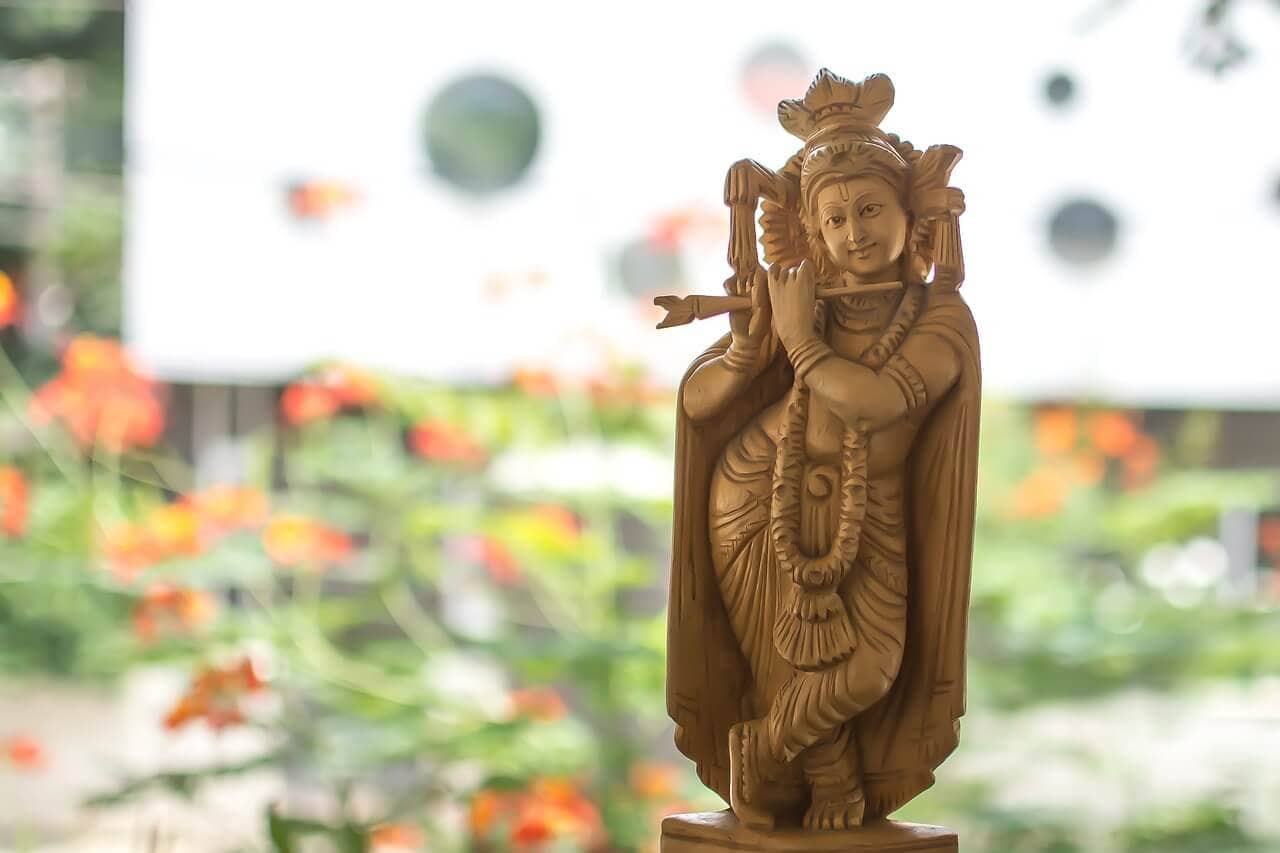
Krishna is the god of compassion, tenderness, protection, and love. According to most stories, Krishna is the eighth avatar of Vishnu and is worshipped as a supreme god too. One of his principal symbols is the flute, which he uses for seductive purposes.
In many of his depictions, Krishna is a blue-skinned god who is sitting and playing this instrument. Krishna is the central figure of the Bhagavad Gita, a famous Hindu scripture. He also appears in the writings of the Mahabharata as part of the battlefield and the conflict. In modern Hinduism, Krishna is an adored god, and his stories influenced other regions and religions too.
Rama
Rama is a worshipped god in Vaishnavism since he is the seventh avatar of Vishnu. He is the main character of the Hindu epic Ramayana, which influenced Indian and Asian culture.
Rama is known by many names, including Ramachandra, Dasarathi and Raghava. He was the representation of chivalry and virtue in the Hindu pantheon. His wife is Sita, who was kidnapped by the demon-king Ravana and taken to Lanka but was later recovered.
For Hindus, Rama is a figure of righteousness, ethics, morality, and reason. According to Hinduism, Rama is the perfect embodiment of humanity. He symbolized the unity between the mental, physical, and psychical realms.
Hanuman
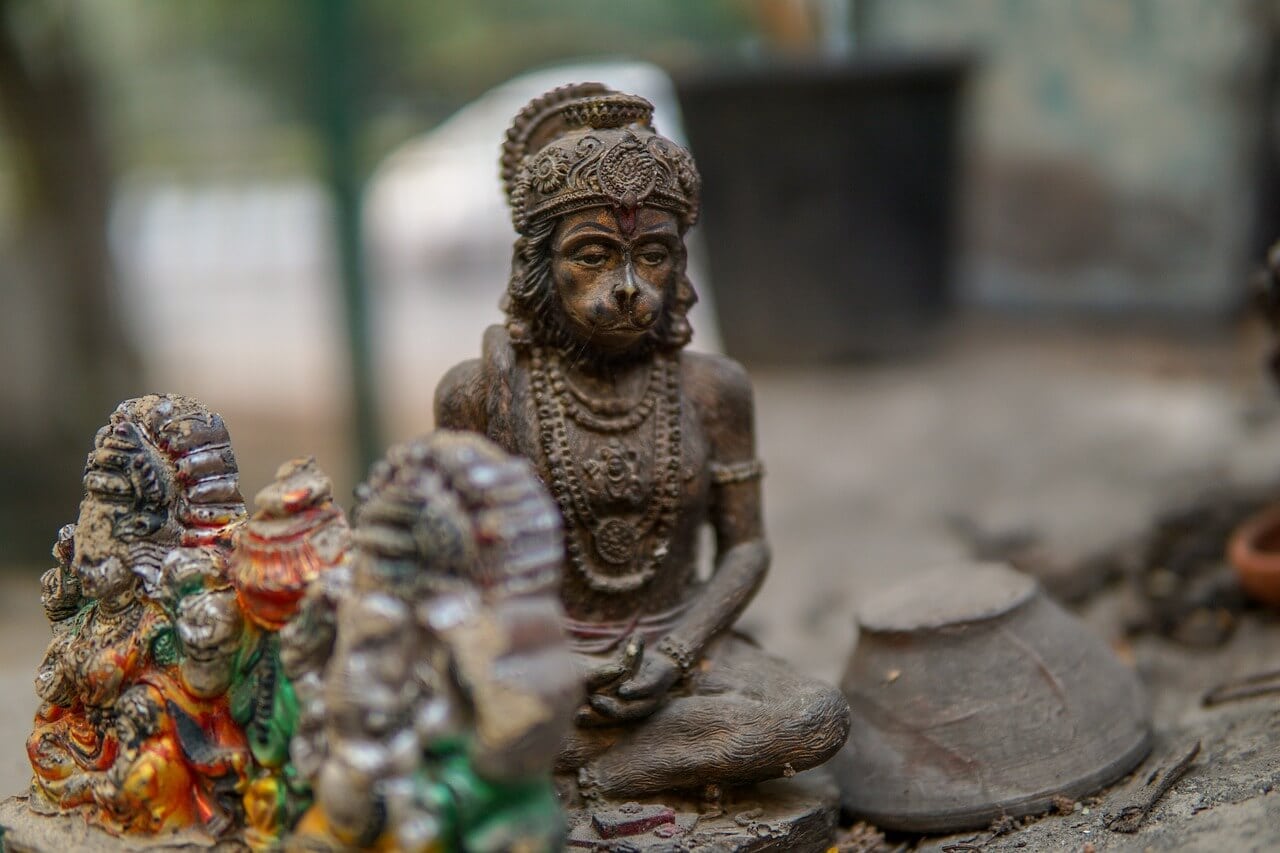
Hanuman is an essential god in Vaishnavism since he is a main character in the Ramayana. Hanuman is the monkey-faced god of physical strength and devotion. In some accounts, he also has associations with perseverance and service.
According to the myths, Hanuman helped Lord Rama to fight the forces of evil in the Ramayana and became an adored god for it. His temples are among the most common places of worship in India. Throughout history, Hanuman has also been worshipped as the god of martial arts and scholarship.
Kali
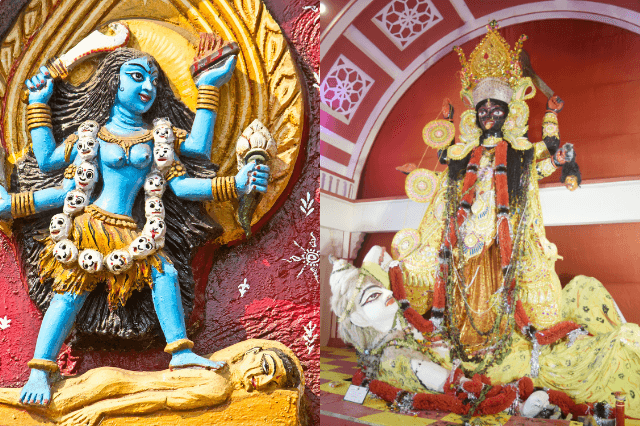
Kali is the Hindu goddess of destruction, war, violence, and time. Some of her depictions show her with her skin completely black or intense blue. She was a mighty goddess who had a terrifying appearance. Most artworks show Kali standing on her husband, Shiva, while holding a decapitated head in one of her hands. She appears in most depictions with a skirt of severed human arms and a necklace of severed heads.
Kali was a ruthless goddess who represented violence and death. Due to her uncontrollable actions and her role as an all-powerful woman, she became a symbol of feminism from the 20th century onwards.
Other Deities in Hinduism
The twelve deities mentioned above are the primordial deities of Hinduism. Apart from them, there are many other gods and goddesses of lesser importance. Here are some of them.
- Indra: At the beginning of Hindu mythology, Indra was the king of the gods. He was the equivalent of the Greek Zeus or the Nordic Odin. However,his worship lost significance, and nowadays, he is only the god of rains and the regent of the heavens.
- Agni: In ancient Hinduism, Agni was the second most worshipped god after Indra. He is the god of the fire of the sun and also the fire of the hearth. In modern Hinduism, there is no cult for Agni, but people sometimes invoke him for sacrifices.
- Surya: Surya is the god of the sun and the personification of this celestial body. According to the myths, he crosses the sky on a chariot pulled by seven white horses. In modern Hinduism, Surya does not have an influential sect.
- Prajapati: Prajapati was the lord of creatures and the creator of the world in the Vedic period. After some time, he became identified with Brahma, the creator god of Hinduism.
- Aditi: Aditi was the mother of Vishnu in one of his incarnations. She is the goddess of the infinite and is also a mother goddess for many celestial beings. She sustains life on earth and maintains the sky.
- Balarama: This deity was one of the incarnations of Vishnu and accompanied Krishna in most of his adventures. Some sources propose that he was an agricultural god. When Krishna became a supreme god, Balarama took a minor role.
- Harihara: This god was the combination of the supreme gods Vishnu and Shiva. He comprised the most important features of both gods.
- Kalkin: This is an avatar of Vishnu who is yet to appear. According to Hinduism, Kalkin will come to earth to rid the world of the unjust and restore balance when the forces of evil take control.
- Nataraja: He is one of the forms of the god Shiva. In this representation, Shiva is the cosmic dancer who has four arms. Nataraja is also a symbol of human ignorance.
- Skanda: He is the firstborn of Shiva and the god of war. He first came to the world to destroy the demon Taraka since the prophecy read that only a son of Shiva could kill him. Skanda appears in most sculptures with six heads and holding weapons.
- Varuna: In the Vedic phase of Ancient Hinduism, Varuna was the god of the sky realm, morality, and divine authority. He was the god-sovereign on earth. Nowadays, Varuna has no significant cult in Hinduism.
- Kubera: This god had associations not only with Hinduism but also with Buddhism. Kubera is a god of wealth, the earth, the mountains, and the underground treasures.
- Yama: In the Hindu religion, Yama is the god of death. According to scriptures, Yama was the first man to die. In this sense, he created the path to mortality humankind has followed ever since.
Wrapping Up
While this list does not attempt to encapsulate such an immense religion as Hinduism, these gods and goddesses are some of the most popular and worshipped in this religion. They’re among the most important deities representing the deep and intricate set of beliefs of the Hindus.








